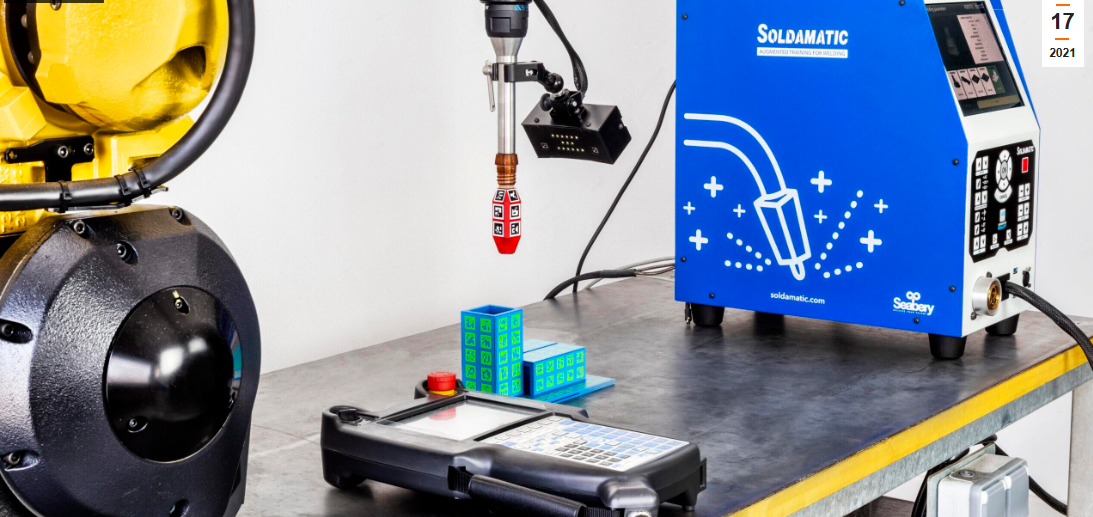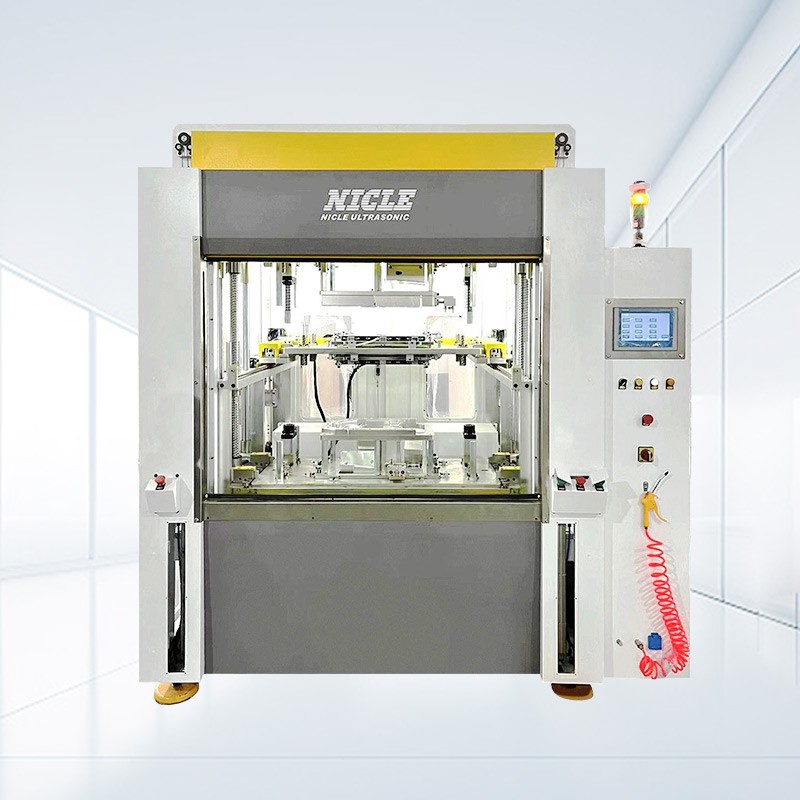GENERAL
The Role Of Photoluminescent Exit Signs In Emergency Preparedness Plans

You may have observed photoluminescent exit signs softly glowing in the distance when passing through a commercial building. For example, strategically positioning a no exit sign can guide individuals away from hazardous routes in an emergency. These signals are necessary for regulations and crucial to emergency readiness strategies. How do they specifically help in ensuring our safety?
The Mechanics Behind Photoluminescent Exit Signs
Unlike traditional electrical signs, photoluminescent signs do not rely on power sources to stay lit. Instead, they absorb ambient light and then emit it when it’s dark. This makes them particularly useful during power outages. Photoluminescent materials are typically made from strontium aluminate pigments, which can emit light for several hours after being charged by a light source. A National Fire Protection Association study highlighted that these signs can remain visible for hours after the lights go out. This feature is crucial in guiding occupants to safety during emergencies, especially when electrical systems fail or lights are obstructed by smoke. The light emitted by these signs is often green, which the human eye is susceptible to, making it easier to notice the signs even in low-visibility conditions.
Legal Requirements And Standards
Many regions mandate the use of photoluminescent exit signs in commercial buildings. Both OSHA and local fire codes have specific guidelines for their implementation. Proper placement ensures people can find their way out safely, even in the thickest smoke or complete darkness. Non-compliance can result in hefty fines and increased liability during emergencies. For example, according to local fire codes, these signs must be placed at specific heights and distances to maximize visibility.
Additionally, they must be tested regularly to ensure their luminance levels meet the required standards. These regulations ensure occupants have a clear and reliable path to safety during an emergency, such as a fire or an earthquake. Non-compliance can not only lead to significant fines and increased legal and financial liabilities in an emergency where individuals cannot evacuate safely.
Benefits Of Traditional Exit Signs
- Energy Efficiency: Since they do not require electricity, they can significantly reduce energy costs. Traditional exit signs are typically powered by electrical circuits or batteries, which consume electricity 24/7. On the other hand, photoluminescent signs charge themselves during the day and emit light in darkness, making them an eco-friendly and cost-effective solution. This can result in savings on the electricity bill and the costs associated with battery replacements and overall maintenance.
- Reliability: No wires mean no risks of electrical failure during emergencies. Electrical exit signs can fail if the circuits are damaged or the power supply is cut off. Photoluminescent signs remain operational regardless of electrical issues, providing a consistent and reliable means of egress. This reliability becomes critical in high-risk scenarios such as fires, where electrical circuits are often among the first systems to fail.
- Maintenance: They require minimal maintenance compared to battery or electrically powered signs. Regular electrical signs need frequent battery replacements and maintenance to function correctly. On the contrary, photoluminescent signs require only occasional cleaning to keep their surfaces free from dust and obstructions that might block light absorption. This reduced need for maintenance translates into lower long-term operational costs and ensures that the signs are always in a state of readiness.
Installation And Maintenance Tips
Installing photoluminescent exit signs is straightforward but must adhere to specific guidelines. Ensure the signs are exposed to adequate lighting for at least 60 minutes daily to charge their luminescent properties fully. Cleaning the signs periodically removes any dust or particulates that could inhibit their ability to absorb and emit light efficiently. This includes installing the signs and testing how to install the signs and how to test them periodically to ensure they meet the required luminance levels. It’s also crucial to record maintenance activities and testing results to ensure compliance with local safety regulations. Regular maintenance and testing ensure these signs perform optimally when needed, providing peace of mind to building managers and occupants alike.
Debunking Common Myths
Some argue that photoluminescent signs are less bright than their electrically powered counterparts. However, advances in material science have significantly improved their luminance, making them comparable to, if not brighter than, many traditional exit signs. Moreover, unlike electrical signs, their effectiveness doesn’t fade over time due to battery failure or wiring issues. These signs are designed to be visible through smoke and darkness, providing a reliable means of egress. They are also often tested under rigorous conditions to ensure adequate visibility in the darkest and most challenging environments. The durability and resilience of photoluminescent signs make them an increasingly popular choice for safety professionals striving to enhance emergency preparedness measures in their facilities.
The Future Of Emergency Preparedness
As technology evolves, so do the materials and capabilities of photoluminescent signs. Emerging innovations promise to make them even more efficient and reliable. Researchers are exploring new luminescent materials that can provide longer-lasting and brighter illumination. Moving forward, we can expect these signs to become an even more integral part of comprehensive emergency preparedness plans, boosting overall safety standards. The continuous improvements in this technology, coupled with increased awareness and regulatory support, will play a crucial role in enhancing building safety and emergency preparedness across various sectors. These advancements are technical and regulatory, with more jurisdictions expected to mandate photoluminescent signs as part of their building and fire safety codes, making them a cornerstone of modern emergency preparedness strategies.
GENERAL
Microsoft Tech Careers That AI Can’t Take Over

The rapid advancement of artificial intelligence (AI) has sparked widespread concern about potential job displacement across various industries. While AI excels in tasks involving pattern recognition and data processing, roles that demand creativity, empathy, and complex decision-making remain predominantly human domains. This raises critical questions about which professions are most vulnerable to automation and which Microsoft Jobs are likely to remain irreplaceable..
Secure Your Future: AI-Resistant Microsoft Technology Careers, How to Get Certified, and Earning Potential:
- Data & Analytics Engineer (Microsoft Focus: Azure Data Services):
AI can’t replace the strategic thinking needed to build robust data pipelines on platforms like Azure. Engineers translate business needs into technical solutions.
-
- Time to Get Certified (Example): Microsoft Certified: Azure Data Engineer Associate (3-6 months study). This certification validates your Azure skills, making you a strong Microsoft candidate.
- Average Salary: Data Analytics Engineers at Microsoft in the US can expect an average annual salary ranging from $83,400 to $167,800, depending on experience and location.
- Power BI Reporting Consultant (Microsoft Focus: Power BI & Fabric):
Turning raw data into impactful business insights requires human creativity and understanding – skills AI lacks. As companies leverage Power BI and Microsoft Fabric, consultants who can tell the story behind the data are crucial.
-
- Time to Get Certified (Example): Microsoft Certified: Power BI Data Analyst Associate (2-4 months study). This demonstrates your expertise in Microsoft’s leading BI tool, a key asset for Microsoft careers.
- Average Salary: Microsoft BI Consultants in the US typically earn an average annual salary around $106,512, with the majority ranging between $85,500 and $126,500.
- Data Architect (Microsoft Focus: Azure Solutions Architect Expert):
Designing and overseeing complex data systems on platforms like Azure demands strategic vision and deep business understanding that AI can’t replicate. Architects are essential for building the data foundation Microsoft and its clients rely on.
-
- Time to Get Certified (Example): Microsoft Certified: Azure Solutions Architect Expert (6-12 months study). This advanced certification signals you have the expertise Microsoft seeks for designing complex Azure solutions.
- Average Salary: Data Architects at Microsoft in the US can command impressive salaries, with average annual pay around $135,169. However, salaries can range from $97,500 to $182,000, with top earners potentially exceeding this.
- Power BI Developer (Microsoft Focus: Power BI & Azure):
Creating engaging and insightful data visualizations in Power BI requires human intuition and a grasp of business context. While AI assists, developers are the storytellers of data within the Microsoft environment.
-
- Time to Get Certified (Example): Microsoft Certified: Power BI Data Analyst Associate (2-4 months study). This certification is a strong entry point into the world of Microsoft data and analytics development.
- Average Salary: Microsoft Power BI Developers in the US typically earn an average annual salary around $91,744, with the majority ranging between $80,000 and $110,000.
How to Land Your Dream Microsoft Tech Job: Your Roadmap to Success
So, you’re ready to make the switch and target one of these future-proof Microsoft careers. Excellent! Here’s a practical guide to help you navigate the job search and land that coveted role:
- Master the Required Skills & Get Certified:
- Focus on the Essentials: Review job descriptions for your target role at Microsoft. Identify the core technical skills and Microsoft technologies they emphasize (e.g., specific Azure services, Power BI features, SQL).
- Certifications are Key: As highlighted earlier, Microsoft certifications are highly valued. Prioritize earning the relevant certifications to demonstrate your proficiency and commitment to the Microsoft ecosystem.
- Hands-on Experience is Crucial: Don’t just rely on theory. Build practical experience through personal projects, contributing to open-source projects (especially those involving Microsoft technologies), or seeking freelance work. Showcase your projects on platforms like GitHub.
- Tailor Your Application to Microsoft:
- Understand Microsoft’s Culture: Research Microsoft’s mission, values, and recent initiatives. Tailor your resume and cover letter to reflect an understanding of their goals and how your skills align.
- Highlight Relevant Experience: Even if your previous roles weren’t directly in these fields, emphasize transferable skills like data analysis, problem-solving, logical thinking, and communication. Frame your experience in a way that resonates with the requirements of the Microsoft role.
- Use the Right Keywords: Carefully review Microsoft job descriptions and incorporate relevant keywords into your resume and cover letter. Applicant Tracking Systems (ATS) often scan for these terms.
- Showcase Your Passion for Technology: Express your enthusiasm for Microsoft technologies and your eagerness to contribute to their innovative projects.
- Network Like a Pro:
- LinkedIn is Your Friend: Connect with Microsoft recruiters and professionals working in your target role. Engage in relevant LinkedIn groups focused on Microsoft technologies and careers.
- Attend Virtual and In-Person Events: Keep an eye out for Microsoft conferences, webinars, and local tech meetups. These are great opportunities to network and learn about potential openings.
- Engage in the Microsoft Tech Community: Participate in forums and discussions to build connections and demonstrate your knowledge.
- Prepare for the Microsoft Interview Process:
- Expect Technical Deep Dives: Be prepared for rigorous technical interviews that will assess your skills in areas like SQL, data modeling, Azure services, or Power BI, depending on the role.
- Brush Up on Behavioral Questions: Microsoft also values candidates with strong soft skills. Prepare to answer questions about your problem-solving approach, teamwork abilities, and how you handle challenges. The STAR method (Situation, Task, Action, Result) is a helpful framework.
- Research Common Microsoft Interview Questions: There are many resources online that share common interview questions asked at Microsoft for specific roles.
- Practice, Practice, Practice: Mock interviews with friends or mentors can help you feel more confident and prepared.
- Leverage Microsoft Resources:
- Microsoft Careers Portal: This is the primary place to find official job openings at Microsoft. Set up alerts for roles that interest you.
- Microsoft Learn: Utilize Microsoft’s free learning platform to deepen your knowledge of their technologies. This can also help you prepare for certifications.
- Microsoft Virtual Training Days: Keep an eye out for free training events offered by Microsoft that can help you upskill and prepare for certifications.
Your Future at Microsoft Awaits:
Switching careers can be a significant step, but targeting these high-demand, AI-resistant roles at Microsoft offers a promising path to long-term stability and growth. By focusing on the right skills, getting certified, networking effectively, and preparing thoroughly, you can significantly increase your chances of landing your dream Microsoft technology jobs. Good luck!
GENERAL
Know Why Qualitative Market Research Is The Secret To Understanding Your Audience

In today’s dynamic and competitive business landscape, understanding your audience is crucial for success. To gain a deep understanding of your target market, qualitative market research emerges as the secret weapon. This article aims to explore the significance of qualitative market research and how it can provide profound insights into your audience’s preferences, behaviors, and needs.
What is Qualitative Market Research?
Qualitative market research is a method of gathering insights and understanding the motivations and opinions of consumers. It involves collecting non-numerical data through various techniques such as interviews, focus groups, and observations. Unlike quantitative research, which focuses on numerical data, qualitative research delves into the qualitative aspects that drive consumer decision-making.
The Power of Qualitative Market Research
Qualitative market research offers numerous advantages that contribute to a deeper understanding of your audience. Let’s explore some of the key benefits:
- Uncover Unmet Needs:
Qualitative research helps identify unmet needs and gaps in the market. By engaging directly with consumers and exploring their experiences, desires, and pain points, businesses can discover opportunities to develop innovative products or services that cater to these unfulfilled needs.
- Understand Consumer Behavior:
Qualitative research provides insights into consumer behavior, allowing businesses to understand why customers make certain choices. By analyzing their motivations, preferences, and attitudes, companies can tailor their marketing strategies and messaging to effectively resonate with their target audience.
- Gain Competitive Edge:
By conducting qualitative research, businesses can gain a competitive edge by understanding their audience better than their competitors. This knowledge enables companies to develop unique value propositions, differentiate themselves from the competition, and create offerings that truly meet their customers’ needs.
- Enhance Product Development:
Qualitative research is invaluable in developing new products or improving existing ones. By involving consumers in the research process, businesses can gather feedback and suggestions that guide product improvements. This approach ensures that the final product aligns with the desires and expectations of the target audience.
Implementing Qualitative Market Research
To successfully implement qualitative market research, it is important to follow these key steps:
- Define Research Objectives:
Clearly outline the objectives and goals of the research. Identify the specific aspects of consumer behavior or market trends that need to be explored to gain a comprehensive understanding of your target audience.
- Recruit Participants:
Carefully select participants who represent your target market. Consider demographics, psychographics, and other relevant factors to ensure diversity and representativeness.
- Choose Appropriate Methodology:
Select the research techniques that align with your research objectives. In-depth interviews, focus groups, or ethnographic research may be suitable depending on the nature of the research.
- Conduct the Research:
Execute the research plan by engaging with participants and collecting data. Ensure that the research environment is conducive to open and honest responses.
- Analyze and Interpret Data:
Thoroughly analyze the collected data, looking for patterns, themes, and insights. Interpret the findings in the context of your research objectives to unlock their full potential.
- Apply Insights:
Utilize the insights gained from qualitative research to inform business decisions. Develop targeted marketing campaigns, refine product development strategies, and enhance customer experiences based on the identified needs and preferences of your audience.
Conclusion
Qualitative market research serves as a powerful tool for understanding your audience on a deeper level. By uncovering unmet needs, understanding consumer behavior, gaining a competitive edge, and enhancing product development, businesses can create strategies that resonate with their target market. Through techniques such as in-depth interviews, focus groups, and ethnographic research, qualitative market research provides valuable insights that quantitative research alone cannot capture. By embracing qualitative market research, businesses can unlock the secret to understanding their audience and drive success in today’s competitive marketplace.
GENERAL
The Future of Hot Plate Welding: Emerging Trends and Innovations

Hot plate welding is a widely used process for joining thermoplastic components, particularly in industries like automotive, medical, and consumer goods. As technology advances, new trends are shaping the future of this process, improving efficiency, precision, and sustainability.
Innovations such as automation, artificial intelligence (AI), and advanced materials are transforming hot plate welding solutions, making them more adaptable to modern manufacturing needs.

This article explores the latest trends and advancements in hot plate welding plastic solutions, highlighting how they are redefining the way industries approach plastic joining.
1. The Rise of Automation in Hot Plate Welding
Automation is playing a crucial role in enhancing hot plate welding equipment solutions. By integrating robotic systems and smart controls, manufacturers can achieve greater precision, consistency, and efficiency in the welding process.
Key Benefits of Automation:
- Increased Production Speed – Automated welding systems reduce cycle times and enhance throughput.
- Consistent Weld Quality – Eliminates human errors and ensures repeatable results.
- Reduced Labor Costs – Minimises the need for manual intervention, allowing skilled workers to focus on higher-value tasks.
Many manufacturers are investing in fully automated hot plate welding machine solutions that integrate sensors and real-time monitoring to adjust welding parameters dynamically. This trend is making the process more reliable and cost-effective for large-scale production.
2. AI and Machine Learning in Hot Plate Welding
Artificial intelligence (AI) and machine learning are transforming hot plate welding of plastic parts solutions by enabling predictive maintenance, real-time quality control, and process optimization.
How AI is Impacting Hot Plate Welding:
- Defect Detection – AI-powered vision systems can detect imperfections in welds and make adjustments in real time.
- Predictive Maintenance – Machine learning algorithms analyze welding equipment performance and predict potential failures before they occur.
- Adaptive Welding Parameters – AI-driven systems can modify welding settings based on material properties and environmental conditions.
These innovations reduce downtime and improve the overall efficiency of hot plate welding solutions, leading to higher-quality products and lower operational costs.
3. Advancements in Materials for Hot Plate Welding
The development of new thermoplastic materials is influencing the evolution of hot plate welding plastic solutions. Manufacturers are exploring high-performance polymers that offer better heat resistance, durability, and sustainability.
New Material Trends:
- Bio-Based and Recyclable Plastics – As sustainability becomes a priority, industries are shifting toward eco-friendly thermoplastics that can be welded efficiently.
- High-Temperature Resistant Polymers – Advanced plastics with improved thermal stability are expanding the range of applications for hot plate welding.
- Multi-Material Welding – Innovations in material science are enabling the welding of dissimilar plastics, broadening design possibilities.
These material advancements are pushing the boundaries of what can be achieved with hot plate welding machine solutions, opening up new possibilities in product development.
4. Enhanced Precision Through Digital Twin Technology
Digital twin technology is revolutionising hot plate welding equipment solutions by providing a virtual representation of the welding process. This technology allows manufacturers to simulate and optimise welding conditions before actual production.
Benefits of Digital Twin Integration:
- Process Optimisation – Engineers can fine-tune welding parameters digitally to achieve the best results.
- Reduced Waste – Minimises trial-and-error welding, leading to less material wastage.
- Remote Monitoring and Control –Allows real-time tracking of welding performance and troubleshooting from any location.
This technology is particularly useful in car plastic tank hot plate welding, where precision and quality control are paramount. Car plastic tank hot plate welding is a great example of how digital advancements are improving welding reliability and efficiency.
5. Sustainability and Energy Efficiency in Hot Plate Welding
As industries focus on reducing their environmental impact, hot plate welding plastic solutions are evolving to be more energy-efficient and sustainable.
Sustainable Innovations in Hot Plate Welding:
- Energy-Efficient Heating Systems – New heating elements consume less power while maintaining optimal welding performance.
- Emission Reduction Technologies – Improved ventilation and filtration systems reduce harmful emissions during welding.
- Recyclable Welding Fixtures – The use of recyclable and reusable materials in welding fixtures minimises industrial waste.
These sustainable practices are making hot plate welding machine solutions more eco-friendly, helping manufacturers comply with environmental regulations while reducing costs.
6. The Integration of IoT in Hot Plate Welding Machines
The Internet of Things (IoT) is enhancing hot plate welding equipment solutions by connecting machines to digital networks, allowing for real-time data exchange and remote management.
IoT Applications in Hot Plate Welding:
- Remote Diagnostics – IoT-enabled machines can detect performance issues and send alerts before failures occur.
- Cloud-Based Data Storage – Welding data can be stored and analysed to improve production efficiency.
- Smart Control Systems – Operators can adjust welding parameters remotely using mobile or desktop applications.
With IoT integration, manufacturers can achieve greater flexibility and control over their hot plate welding solutions, leading to improved productivity and reduced downtime.
7. The Future of Customisation in Hot Plate Welding
Customisation is becoming increasingly important in hot plate welding of plastic parts solutions, as industries demand tailored welding systems for unique applications.
Customisation Trends:
- Modular Welding Systems – Machines designed with interchangeable components for different welding applications.
- Adjustable Welding Cycles – Customised settings for varying plastic thickness and material types.
- User-Friendly Interfaces – Intuitive touchscreens and software interfaces simplify operation and training.
Customised welding solutions provide manufacturers with greater flexibility and efficiency in their production lines.
For businesses looking for advanced hot plate welding plastic solutions, it’s essential to choose equipment that aligns with their specific manufacturing needs. Hot plate welding plastic solution options continue to evolve, offering enhanced flexibility and efficiency.
8. The Growing Demand for Hybrid Welding Techniques
Hybrid welding techniques, which combine hot plate welding plastic solutions with other welding methods, are gaining traction.
Popular Hybrid Welding Methods:
- Infrared and Hot Plate Welding – Uses infrared heating for preheating before applying traditional hot plate welding.
- Ultrasonic and Hot Plate Welding – A combination of ultrasonic energy and heat for improved bonding strength.
- Laser-Assisted Hot Plate Welding – Enhances precision by integrating laser energy with hot plate welding.
These hybrid techniques improve weld strength, reduce cycle times, and expand the possibilities of hot plate welding equipment solutions.
9. Global Market Trends and Future Projections
The demand for hot plate welding machine solutions is expected to grow, driven by advancements in automation, sustainability, and material science.
Industry Projections:
- Automotive Sector Growth – Increasing use of thermoplastic components in electric vehicles (EVs) will drive demand for hot plate welding.
- Medical Industry Expansion – Precision welding is critical for medical devices, leading to higher adoption of AI-powered welding machines.
- Smart Manufacturing Adoption – More manufacturers will integrate digital and IoT-based welding solutions for better efficiency.
As industries continue to evolve, hot plate welding of plastic parts solutions will remain a cornerstone of modern manufacturing, adapting to new technologies and market demands.
Conclusion
The future of hot plate welding solutions is being shaped by automation, AI, advanced materials, and sustainability efforts. As manufacturers seek to improve efficiency, reduce costs, and enhance weld quality, new technologies are driving innovation in hot plate welding plastic solutions.
From IoT-connected machines to hybrid welding techniques, these advancements are redefining how industries approach hot plate welding equipment solutions. By embracing these emerging trends, manufacturers can stay ahead of the competition and optimise their production processes for the future.
-

 GENERAL1 year ago
GENERAL1 year agoDiscovering the Artistic Brilliance of Derpixon: A Deep Dive into their Animation and Illustration
-

 Posts1 year ago
Posts1 year agoSiegel, Cooper & Co.
-

 Lifestyle1 year ago
Lifestyle1 year agoPurenudism.com: Unveiling the Beauty of Naturist Lifestyle
-

 Lifestyle1 year ago
Lifestyle1 year agoBaddieHub: Unleashing Confidence and Style in the Ultimate Gathering Spot for the Baddie Lifestyle
-

 HEALTH1 year ago
HEALTH1 year agoTransformative Health Solutions: Unveiling the Breakthroughs of 10x Health
-

 Entertainment1 year ago
Entertainment1 year agoGeekzilla Podcast: Navigating the World of Pop Culture, Gaming, and Tech
-

 Entertainment1 year ago
Entertainment1 year agoKhatrimaza Unveiled: Exploring Cinematic Marvels and Entertainment Extravaganza
-

 BUSINESS1 year ago
BUSINESS1 year agoUnlocking the Secrets to Jacqueline Tortorice Remarkable Career and Accomplishments
